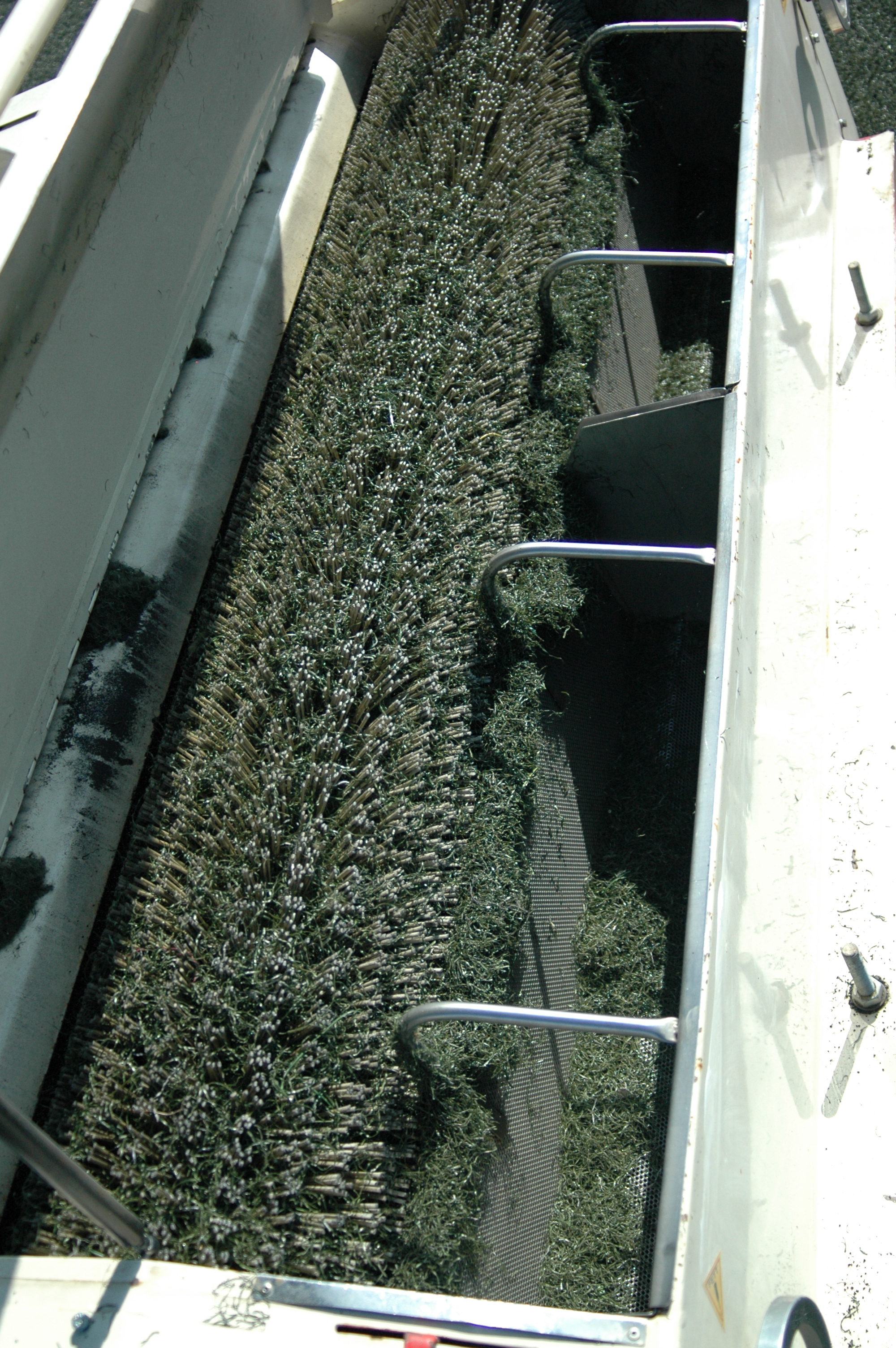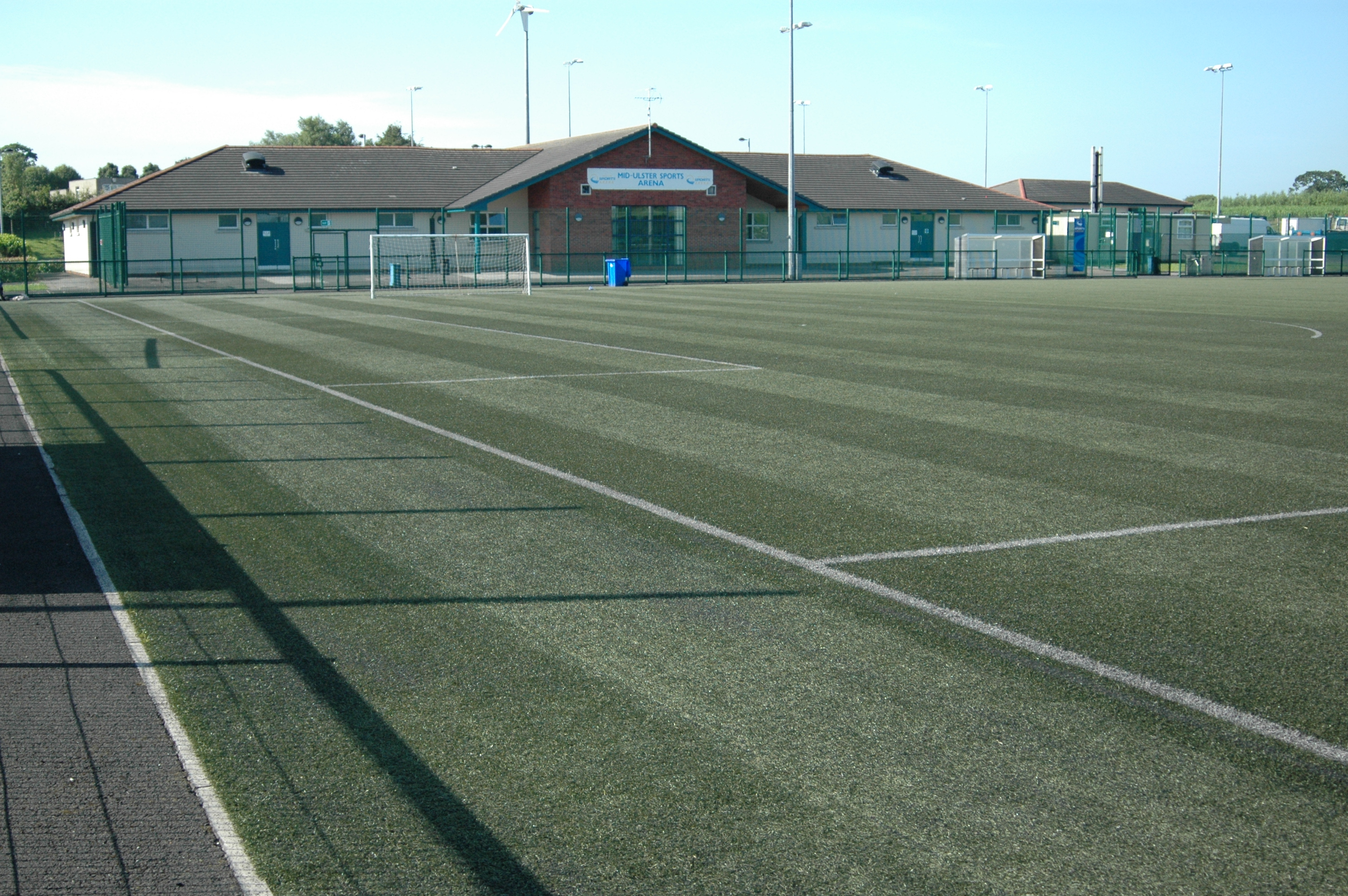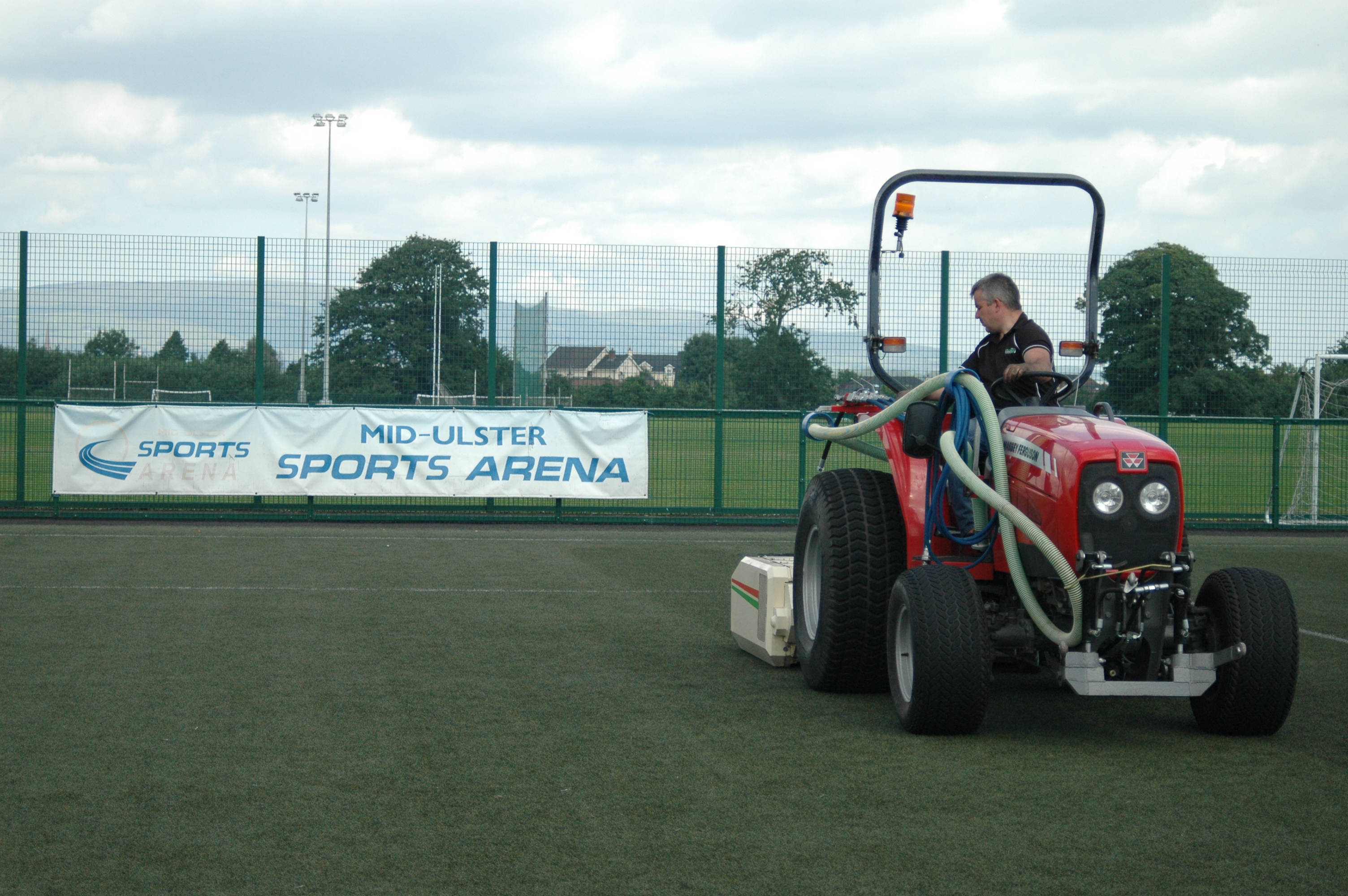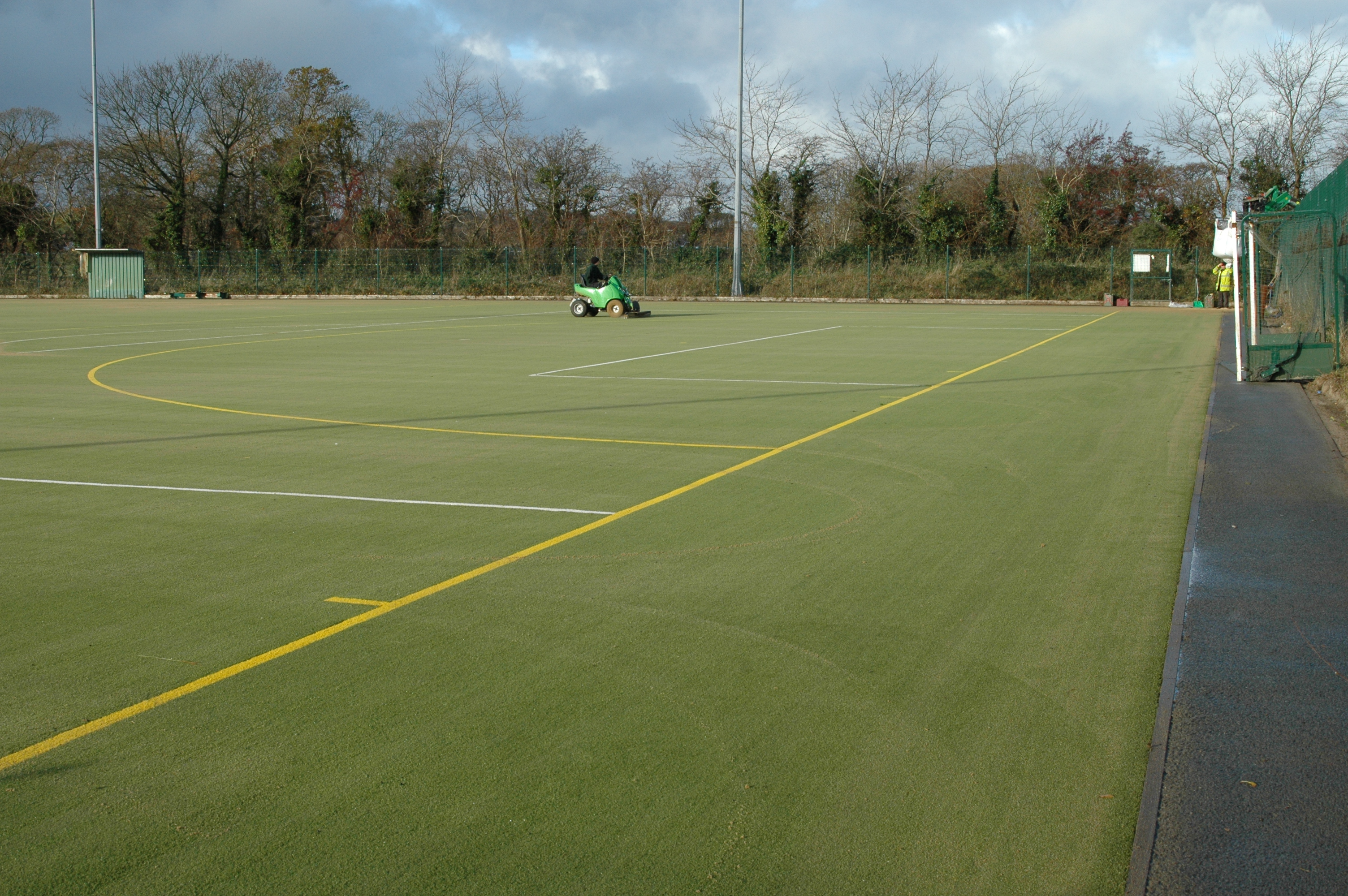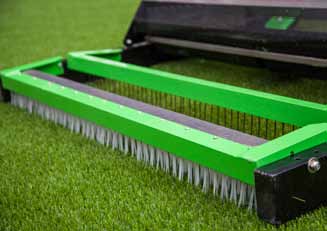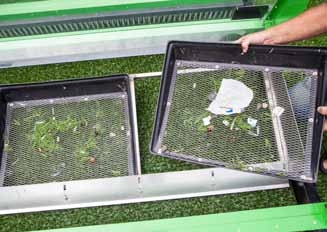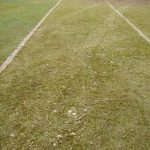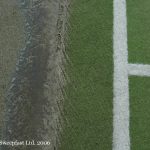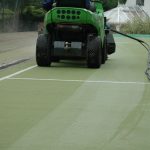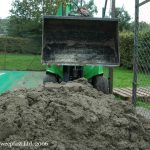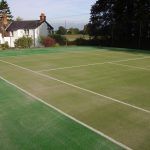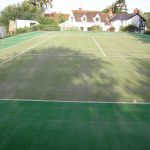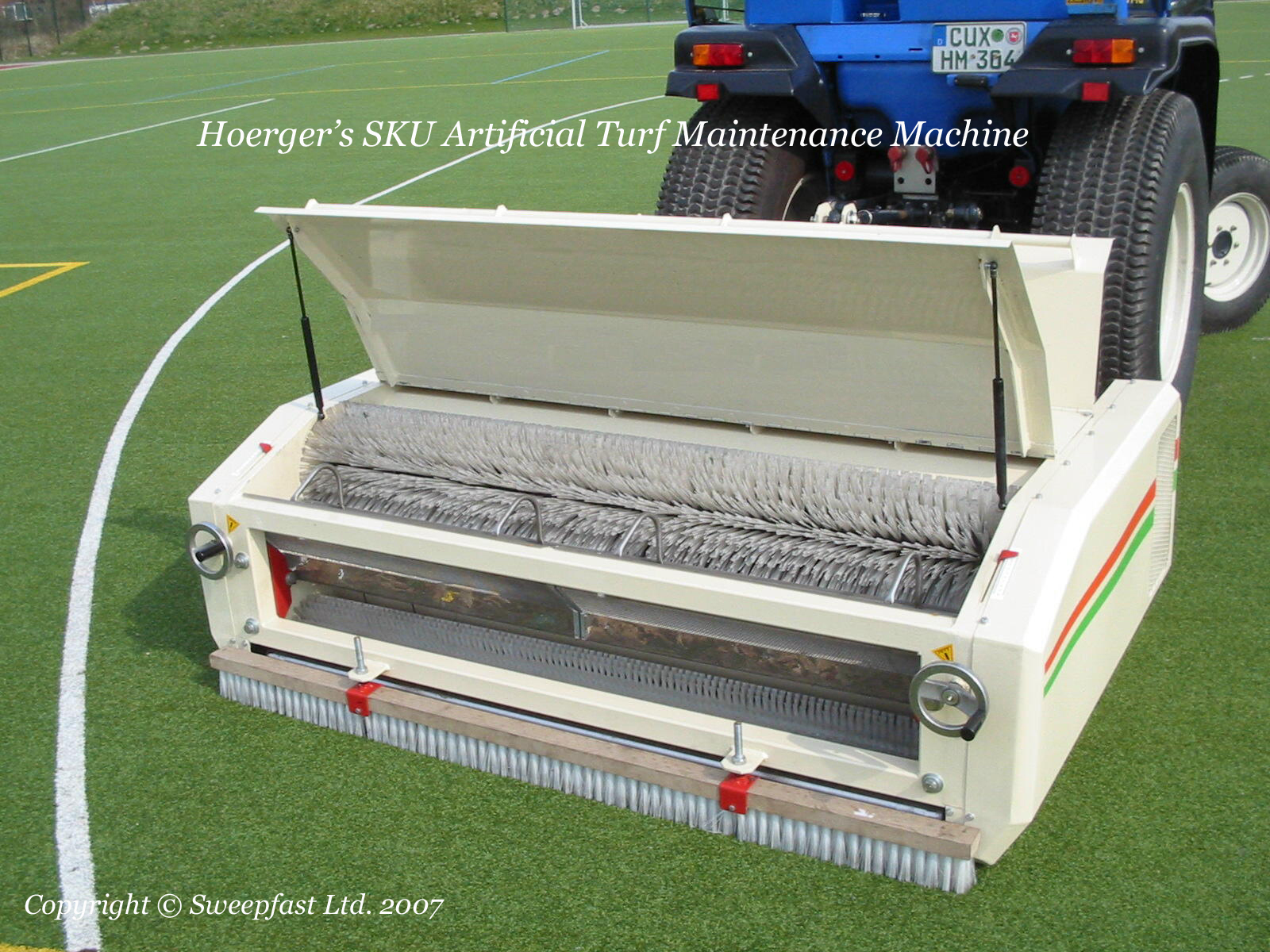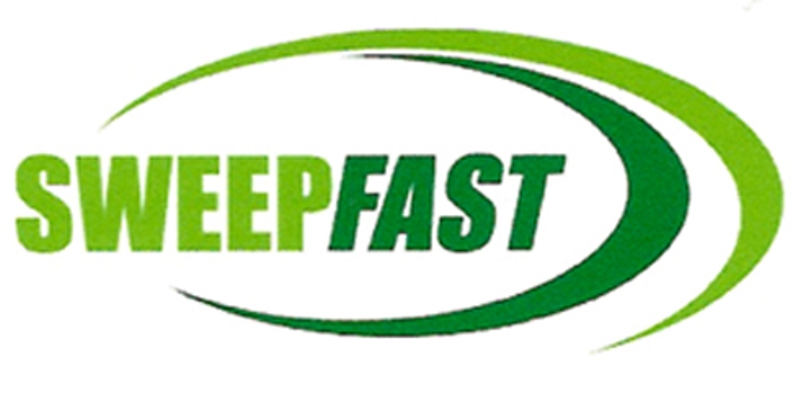With the huge amount of artificial grass surfaces now in use, and with more being installed every month an in house maintenance regime coupled with a professional contractor maintenance plan has never been so important. I know this works out as an unexpected expense but there really is no other option, and bad advice from poor quality contractors can be even worse. I’ll give you one recent example.
The recent spell of wet weather has brought home once again just how important maintaining artificial sports surfaces is. On a recent visit to a customer where the maintenance regime had simply been regular drag brushing. What is worrying is that more recently a “contractor” had advised that power brushing off the top surface and replacing a tiny amount of old sand with new would “revitalise” the pitch. But within one month the pitch had started to retain water once again, now rendering the facility totally unsuitable for use.
The only procedure to discover exactly what is going on beneath the surface is to take samples of the infill then return them to the warehouse and set about processing them. So after giving them this advice and at the request of the customer we took 9 samples from locations all over the surface, from high use areas to areas where there was very little foot fall. These have now been sampled and analysed and the results indicated that the contamination levels are way in excess of the standards for safe play, and the continuous free draining of the surface.
The conclusion of my report is going to indicate a spend in excess of £10,000.00 now to put things right, where if they had been given the correct information and acted on it the pitch would have still been playable now, with an annual spend of less than £2,000.00 and no loss of play and earnings.
It’s so frustrating in this industry that there are so much bad advice from convincing salesmen leading to spending money for the wrong reasons, with only one consequence, the customer has to eventually pay twice.
This is why at Sweepfast we pride ourselves in taking care to visit every site to assess its requirements whether it’s a small private tennis court or a university multi sports complex. We take every measure to ensure the advice we give is based on truth and not on assumptions, and we know then that we can rest easy.
For professional synthetic sports surface advise and service from the first site visit to completion of the works call 0121 747 9255 visit www.sweepfast.com or email sales@sweepfast.com

